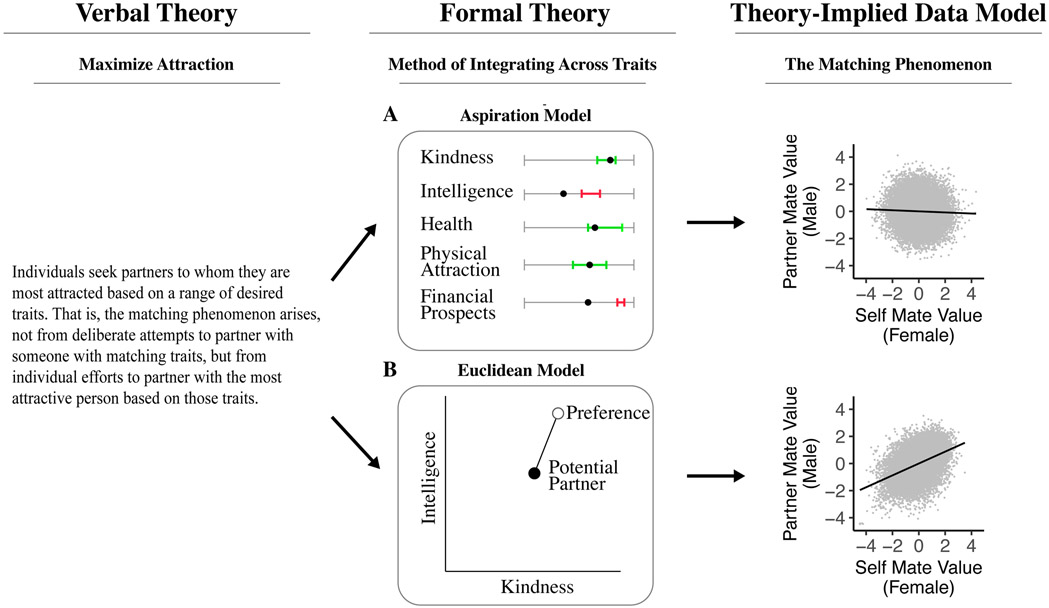Figure 4:
Due to its imprecision, the verbal Maximize Attraction theory can be interpreted in multiple ways. For example, it is unclear from the verbal theory precisely how we integrate information across traits to determine who is the most appropriate partner. To illustrate the impact of failing to make these aspects of the theory explicit, we reproduced findings from two computational models developed and evaluated by Conroy-Beam et al. (2019). In the first (Panel A), a so-called “aspiration” model, individuals have an ideal range for each of a set of traits and the more traits that fall within the ideal range, the higher the agent’s attraction to the potential mate. In the second (Panel B), attraction is determined by the Euclidian distance between an agent’s preferences and the potential partner’s traits in the multi-variate space defined by all traits of interest. As seen in the final column, these models make very different predictions. When adopting the aspiration mechanism, there is no association between an agent’s mate value (defined as the euclidean distance from the agent’s traits to the average preferences of potential partners) and the mate value of their partner. In contrast, when adopting the euclidean distance mechanism, a strong positive association (i.e., the matching phenomenon) is observed.

